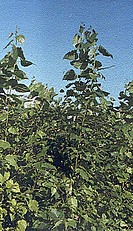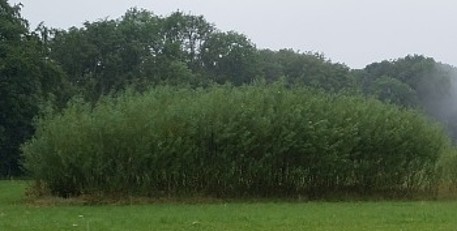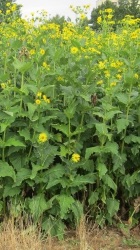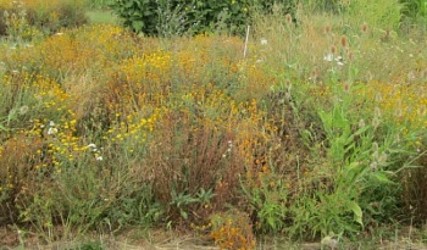Renewable raw materials and energy crops
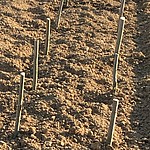
Willow (Salix)
Family: Willow family (Salicaceae)
| Type | Plants / m² | Plantation | Fertilisation | Measures |
|---|---|---|---|---|
Willow | 16 (Double row 40cm) Plant rows spacing 120 cm | 26.02.2019 | 23.03.2021 60 kg N/ha (KAS 27%) KAS (27%) 60 kg N/ha: 15.03.2022 KAS (27%) 60 kg N/ha: 23.03.2023 KAS (27%) 60 kg N/ha: 21.03.2024 KAS (27%) 60 kg N/ha: 27.03.2025 | Interrow Cultivator: 17.03.2020 Interrow Cultivator: 14.04.2020 14.02.2024 1. harvest |
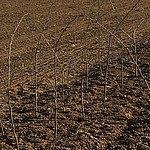
Poplar (Populus)
Family: Willow family (Salicaceae)
| Type | Plants / m² | Plantation | Fertilisation | Measures |
|---|---|---|---|---|
Poplar | 16 (Double row40cm) Plant rows spacing 120 cm | 26.02.2019 | 23.03.2021 60 kg N/ha (KAS 27%) KAS (27%) 60 kg N/ha: 14.03.2022 KAS (27%) 60 kg N/ha: 23.03.2023 KAS (27%) 60 kg N/ha: 21.03.2024 KAS (27%) 60 kg N/ha: 27.03.2025 | Interrow Cultivator: 17.03.2020 14.02.2024 1. harvest |
Miscanthus (Miscanthus x giganteus)
Family: True Grasses (Poaceae)
| Type | Plants / m² | Plantation | Fertilisation | Measures |
|---|---|---|---|---|
Miscanthus | 2 | April 2019 | 24.03.2020 60 kg N/ha (KAS 27%) 23.03.2021 60 kg N/ha (KAS 27%) KAS (27%) 60 kg N/ha: 14.03.2022 KAS (27%) 60 kg N/ha: 23.03.2023 KAS (27%) 60 kg N/ha: 21.03.2024 KAS (27%) 60 kg N/ha: 27.03.2025 | Interrow Cultivator: 14.04.2020 |
Switchgrass (Panicum virgatum)
Family: True grasses (Poaceae)
| Type | Plants / m² | Plantation | Fertilisation | Measures |
|---|---|---|---|---|
Switchgrass | 10 | 20.03.2019 | 24.03.2020 60 kg N/ha (KAS 27%) 23.03.2021 60 kg N/ha (KAS 27%) KAS (27%) 60 kg N/ha: 14.03.2022 KAS (27%) 60 kg N/ha: 23.03.2023 KAS (27%) 60 kg N/ha: 21.03.2024 KAS (27%) 60 kg N/ha: 27.03.2025 | Interrow Cultivator: 07.04.2020 |
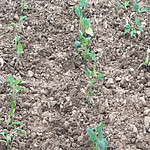
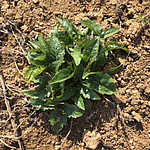
Cup plant (Silphium perfoliatum)
Family: Composite (Asteraceae)
| Type | Plants / m² | Plantation | Fertilisation | Measures |
|---|---|---|---|---|
Cup plant | 4 | April 2019 | 24.03.2020 60 kg N/ha (KAS 27%) 23.03.2021 60 kg N/ha (KAS 27%) KAS (27%) 60 kg N/ha: 14.03.2022 KAS (27%) 60 kg N/ha: 23.03.2023 KAS (27%) 60 kg N/ha: 21.03.2024 KAS (27%) 60 kg N/ha: 27.03.2025 | Interrow Cultivator: 24.03.2020 |
Wild and cultivated plant mix
Biogas BG 90 - perennial
Seed mix for biogas production
Sowing: April 2019
Seed rate: 10 kg/ha (Seeding aid in the mixture 30%)
| Types in the mixture | Proportion in the mix % | Fertilisation | Measures | |
|---|---|---|---|---|
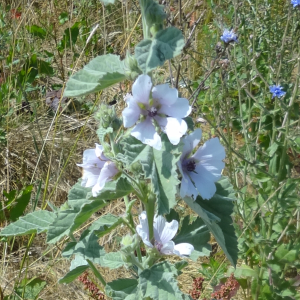 | Marsh mallow (Althaea officinalis) Family: Mallow (Malvaceae) | 7,5 | 23.03.2021 60 kg N/ha (KAS 27%) KAS (27%) 60 kg N/ha: 14.03.2022 KAS (27%) 60 kg N/ha: 23.03.2023 KAS (27%) 60 kg N/ha: 21.03.2024 KAS (27%) 60 kg N/ha: 27.03.2025 | Harrow: 06.04.2020 |
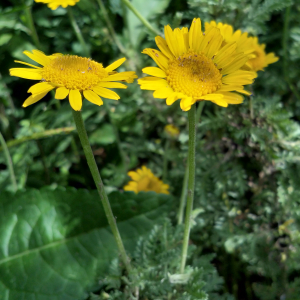 | Yellow chamomile (Anthemis tinctoria) Family: Composite (Asteraceae) | 1,5 | ||
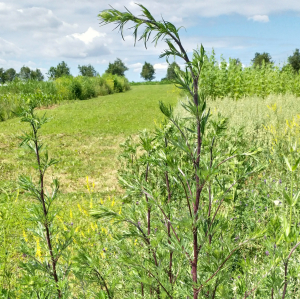 | Mugwort (Artemisia vulgaris) Family: Composite (Asteraceae) | 0,5 | ||
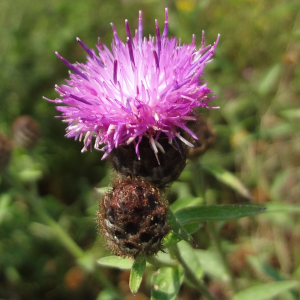 | Black knapweed (Centaurea nigra) Family: Composite (Asteraceae) | 7,0 | ||
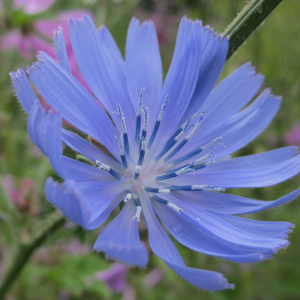 | Blue sailors (Cichorium intybus) Family: Composite (Asteraceae) | 1,5 | ||
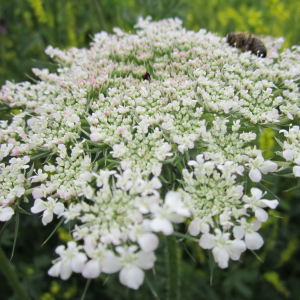 | Eastern carrot (Daucus carota) Family: Umbellifer (Apiceae) | 0,5 | ||
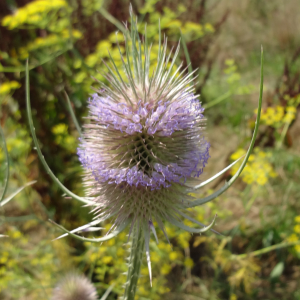 | Wild teasel (Dipsacus sylvestris) Family: Honeysuckle (Caprifoliaceae) | 0,5 | ||
 | Blueweed (Echium vulgare) Family: Heliotrope (Boraginaceae) | |||
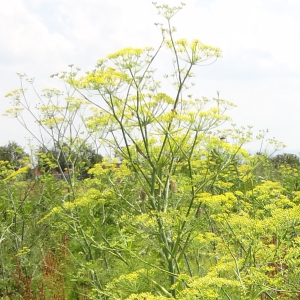 | Fennel (Foeniculum vulgare) Family: Umbellifer (Apiceae) | 3,5 | ||
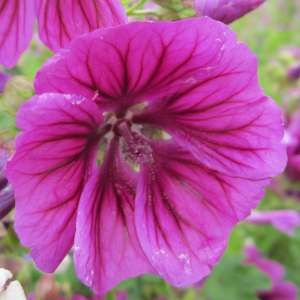 | Mauritania mallow (Malva sylvestris var. mauritania) Family: Mallow (Malvaceae) | 3,5 | ||
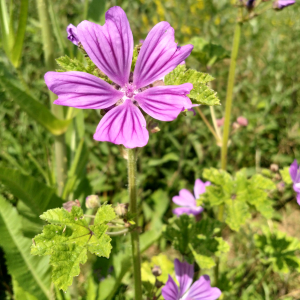 | Common mallow (Malva sylvestris) Family: Mallow (Malvaceae) | 6,0 | ||
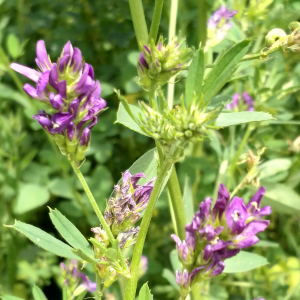 | Lucerne (Medicago sativa) Family: Legume (Fabaceae) | 2,0 | ||
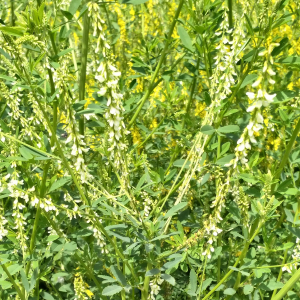 | Bokhara clover (Melilotus albus) Family: Legume (Fabaceae) | 5,0 | ||
Yellow sweet clover (Melilotus officinalis) Family: Legume (Fabaceae) | 5,0 | |||
Sainfoin (Onobrychis viciifolia) Family: Legume (Fabaceae) | 8,0 | |||
Yellow weed (Reseda luteola) Family: Migonette (Resadaceae) | 0,3 | |||
White campion (Silene latifolia alba) Family: Pinks (Caryophyllaceae) | 1,0 | |||
Red campion (Silene dioica) Family: Pinks (Caryophyllaceae) | 1,0 | |||
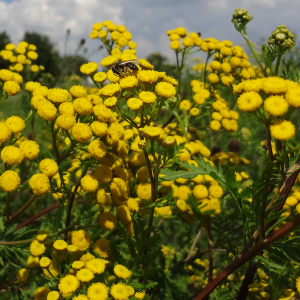 | Tansy (Tanacetum vulgare) Family: Composite (Asteraceae) | 5,0 | ||
 | Mullein (Verbascum) Family: Figwort (Scrophulariaceae) | 0,2 |

